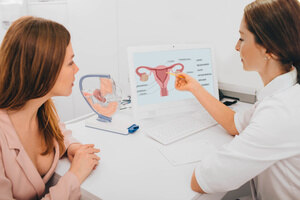An intrauterine device (IUD) is a popular form of birth control that boasts a high efficacy rate. Many women choose it over the birth control pill because there is no need to remember to take it daily; once inserted, it provides protection for several years. However, you will need to check the device’s strings from time to time to ensure it remains firmly in place.
When your IUD is inserted, your health-care provider should show you the steps involved in checking your IUD strings. These are the two plastic threads that dangle down from the device and through the cervix. Although you cannot see these strings, you should be able to feel them with your fingers when you insert them into the vagina.

Checking for your strings regularly is essential to make sure that you are still protected against unwanted pregnancy. To check your IUD strings, follow these steps:
- First,wash your hands thoroughly using warm water and soap, making sure that you clean beneath your nails to reduce the chances of accidentally introducing bacteria during your check.
- Next, you need to locate your cervix. This can be challenging to do while standing, so either sit down or get into a squatting position. Then, insert your middle or index finger into the vagina until you can feel your cervix. This area feels firm and rubbery, not unlike the consistency of the tip of your nose.
- Once you have located your cervix, feel around for the strings of your IUD. These strings are very tiny and will feel like small bits of fishing line. If you can feel them, this means your IUD is in the proper place and should be functioning correctly.
However, it is not just the presence of the strings that you should be checking for; you also need to determine whether they feel the same as they did the last time you checked them. If they feel shorter or longer than your last check, it may be an indication that the IUD has moved. Likewise, if you can feel the hard part of the device itself up against your cervix, it has likely slipped out of position.
In these cases, you need to make an appointment with your health-care provider right away and use a backup method of protection because you could become pregnant.
Warnings

When an IUD is out of place, there is a very small chance that it could lead to problems such as infections or internal tearing. Therefore, you should never attempt to push your IUD back in place if it becomes dislodged or try to remove it if you notice it partially emerging. This is a task that must be left to your physician, who has the right tools to handle it safely. Likewise, you should never pull on your IUD strings when you are checking on them. If you no longer wish to use your IUD, your doctor must remove it.
When To Check Your IUD Strings
Around four to six weeks after your IUD is originally inserted, you will have a follow-up appointment with your doctor, who will check the strings and make sure that the device is in its proper place. Your doctor will also check them at every subsequent routine checkup.
You should also perform your own check once a month, between your menstrual periods. Remember that your IUD has a higher chance of slipping out of place during your period. Therefore, you may wish to check your tampons, pads, or menstrual cups after use to ensure that the IUD has not fallen out.
It is rare for an IUD to move out of place. In cases where this does occur, it normally happens within the first few months of insertion or during a period. Nevertheless, it is important to check regularly.
Why Can’t I Find My IUD Strings?

There are a few potential reasons you may not be able to find your IUD strings. In many cases, it could be that the strings have simply drawn back into your cervical canal or uterus. Your doctor may be able put them back into place during a pelvic exam using a special tool.
In very rare cases, you may not feel your IUD strings because the device has perforated your uterus. This is a very serious complication that can occur with an IUD and requires immediate medical attention. You might also be unable to find the strings because the device has fallen out; in very rare cases, you could be pregnant.
Request an Appointment With the Women’s Health-care Team
IUDs can provide women with long-term protection from unwanted pregnancy, but they can occasionally move out of place. If you have any doubt about the placement of your IUD or you need guidance on how to check your IUD strings, reach out to Raleigh Gynecology & Wellness today to schedule an appointment.
